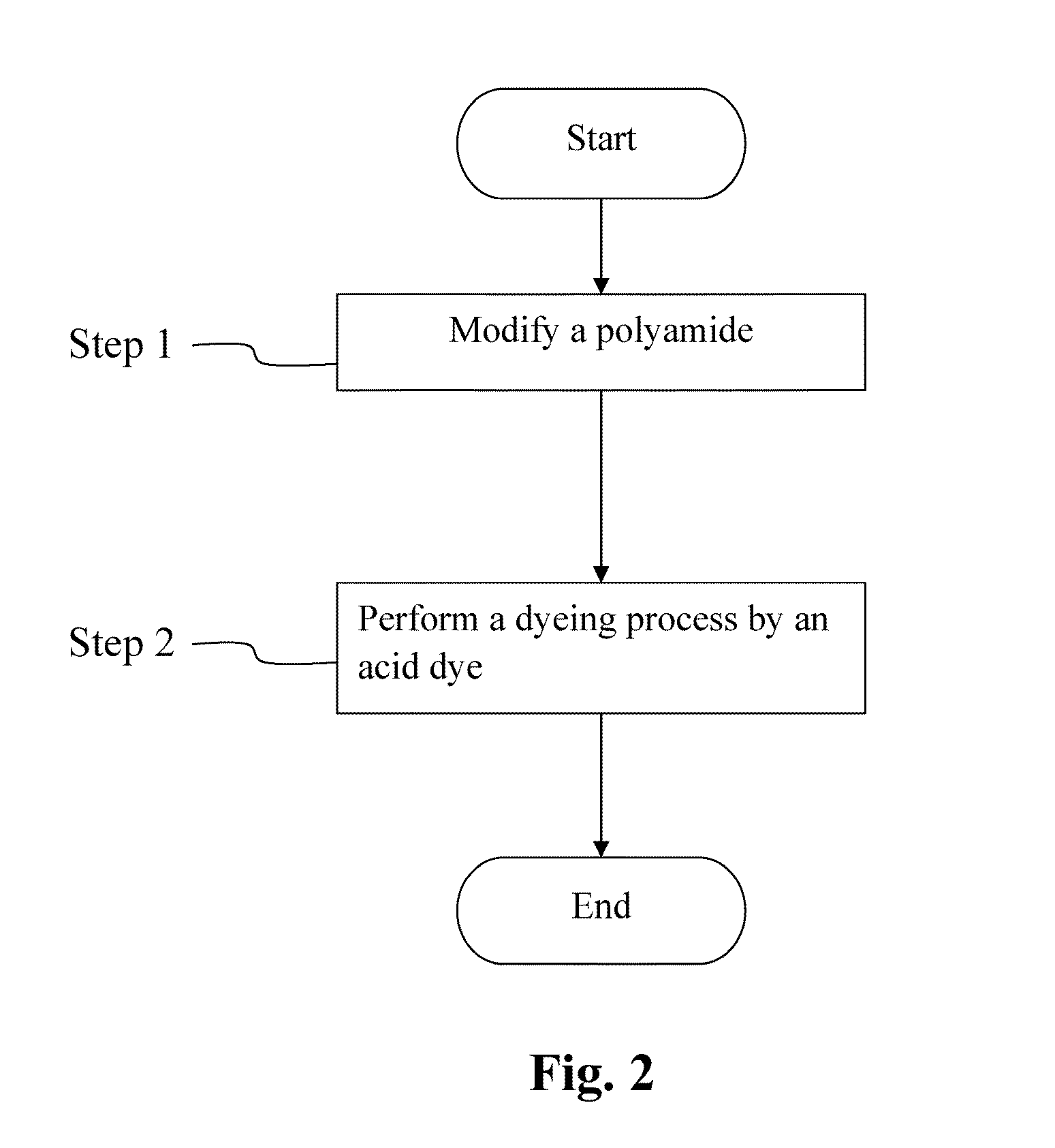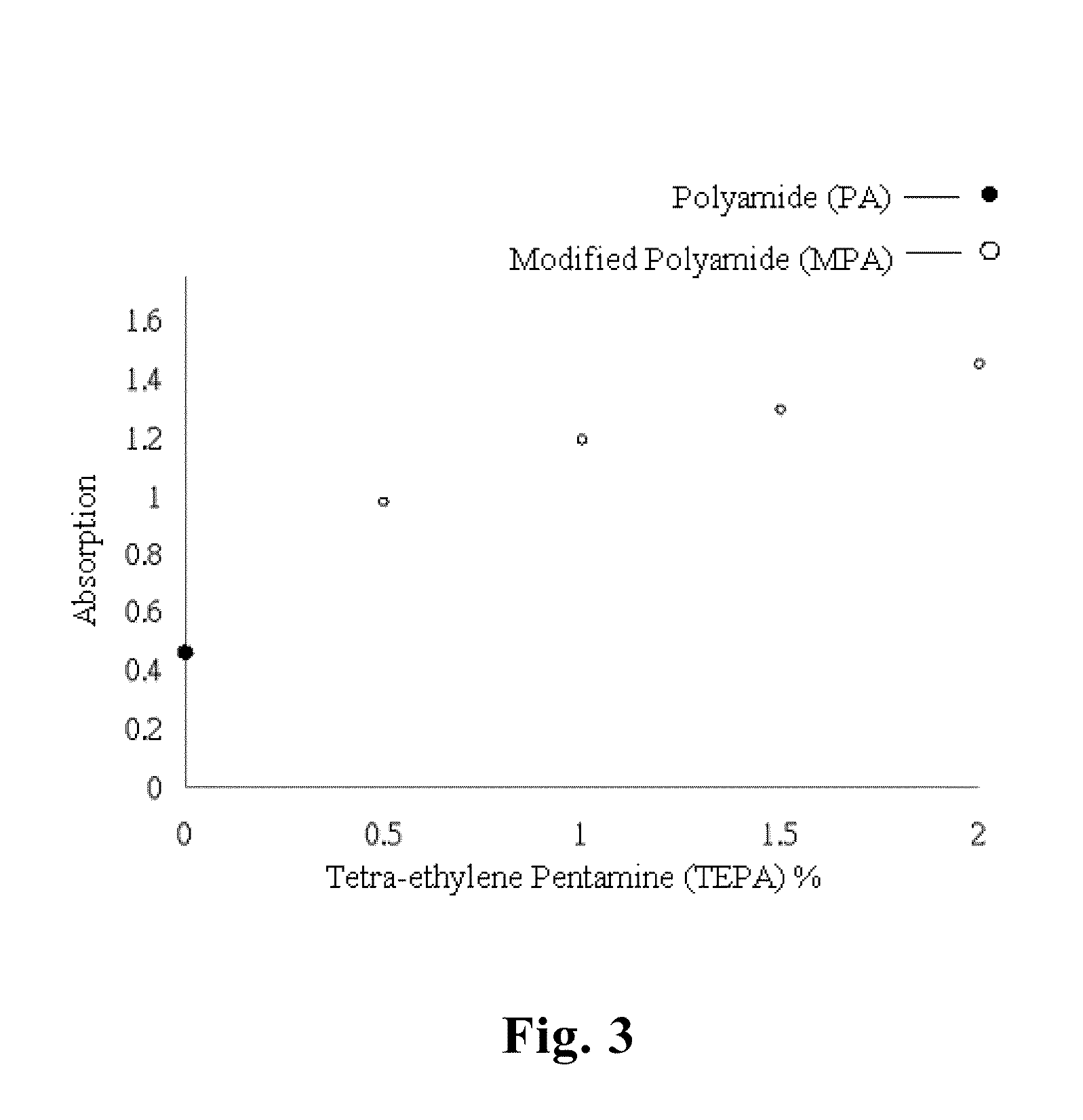Deep Dyeing Process of Polyamide and Polyolefin
a dyeing process and polyamide technology, applied in dyeing process, reactive dyes, chemistry apparatus and processes, etc., can solve the problems of poor dyeing effect of nylon, inability to achieve the effect of improving the content of amino groups, and relatively weak bonding
- Summary
- Abstract
- Description
- Claims
- Application Information
AI Technical Summary
Benefits of technology
Problems solved by technology
Method used
Image
Examples
Embodiment Construction
[0027]To make it easier for our examiner to understand the technical characteristics and operating procedure of the present invention, we use preferred embodiments together with the attached drawings for the detailed description of the invention as follows.
[0028]In a deep dyeing process of polyamide and polyolefin in accordance with the present invention, a compatibilizer precursor (such as a carboxyl polymer, an anhydride polymer, a hydroxyl polymer, an epoxy polymer and a cyanate-based compound) and an amino group (wherein the amino group containing chemical is one selected from the collection of ethylene diamine, diethylenetriamine, triethylenetetramine, tetra-ethylene pentamine, pentaethylenehexamine, hexaethyleneheptamine, polyethylene polyamine and their related derivatives), and a hydroxyl group or epoxy group containing chemical are used for modifying the polyamide (PA or nylon) and polyolefin (PO), and then a reactive dye and / or an acid dye are used for the dyeing process t...
PUM
| Property | Measurement | Unit |
|---|---|---|
| temperature | aaaaa | aaaaa |
| temperature | aaaaa | aaaaa |
| temperature | aaaaa | aaaaa |
Abstract
Description
Claims
Application Information
 Login to View More
Login to View More - R&D
- Intellectual Property
- Life Sciences
- Materials
- Tech Scout
- Unparalleled Data Quality
- Higher Quality Content
- 60% Fewer Hallucinations
Browse by: Latest US Patents, China's latest patents, Technical Efficacy Thesaurus, Application Domain, Technology Topic, Popular Technical Reports.
© 2025 PatSnap. All rights reserved.Legal|Privacy policy|Modern Slavery Act Transparency Statement|Sitemap|About US| Contact US: help@patsnap.com



